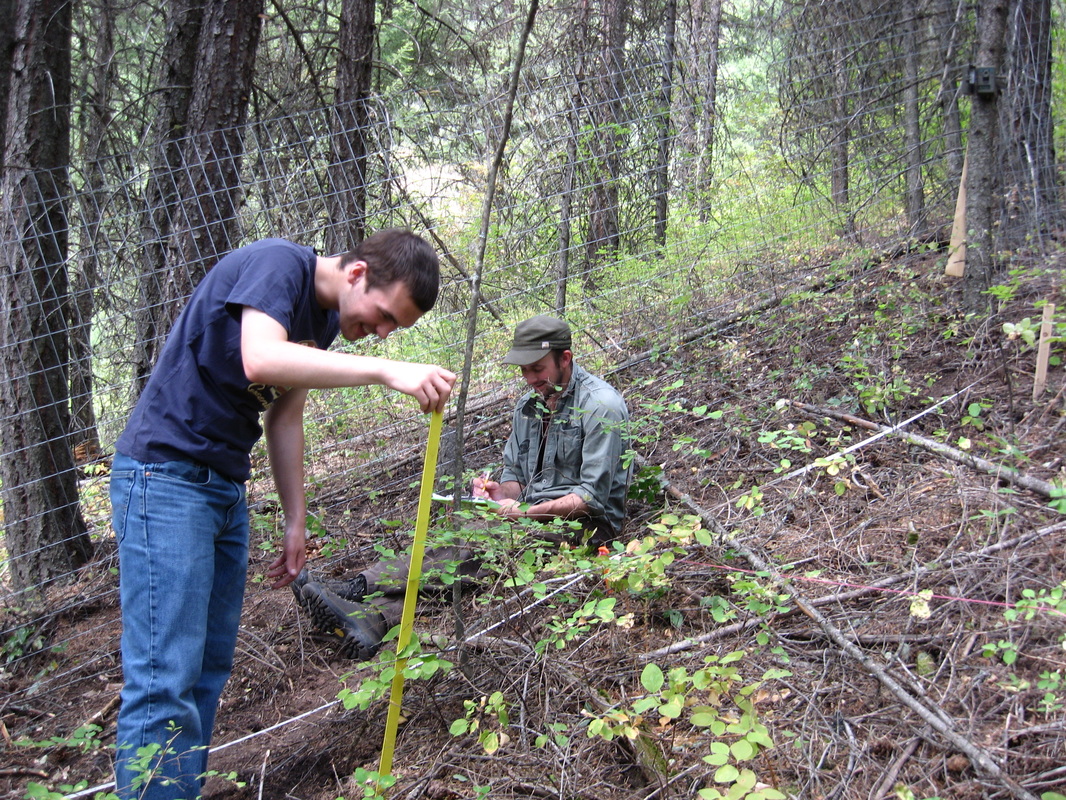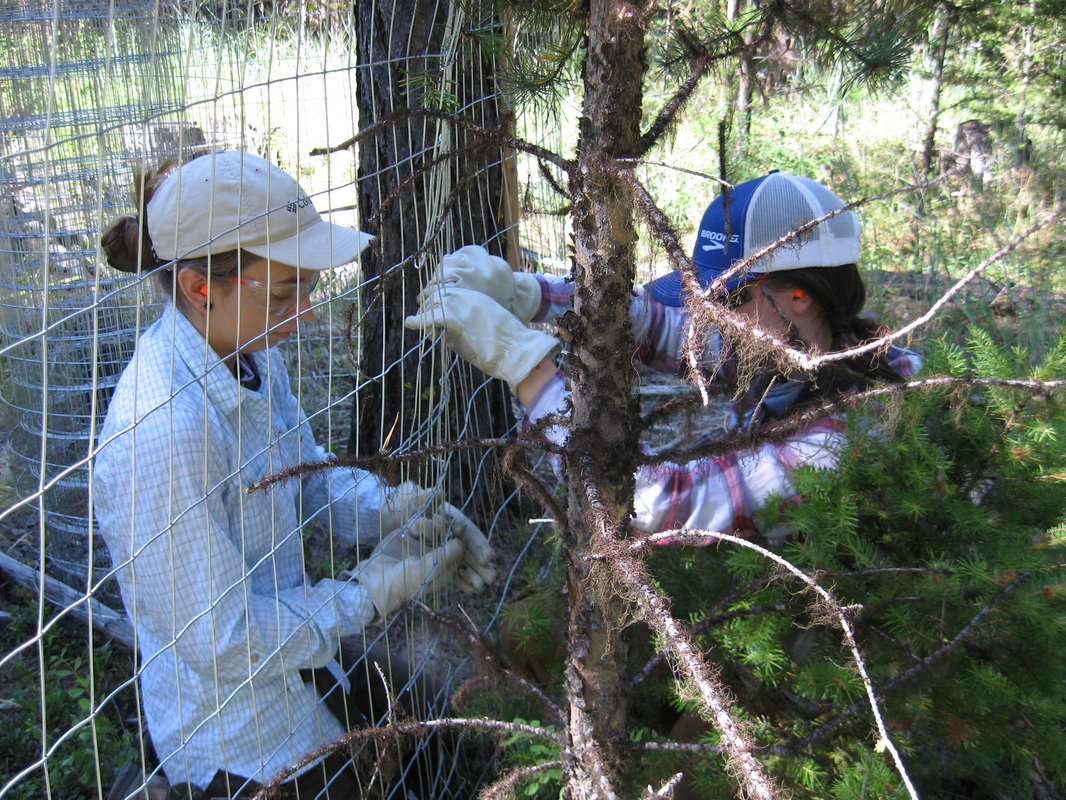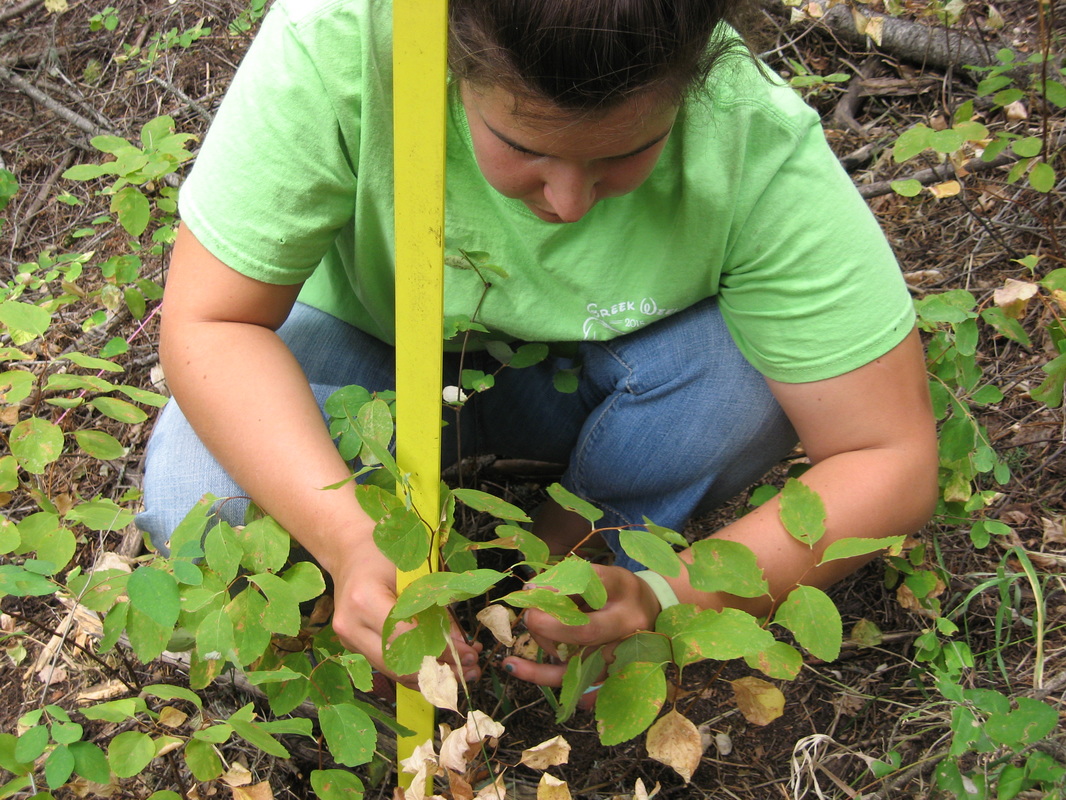by: Apryle Craig
This summer, I started installing deer exclosures to investigate the impact of wolves on plant communities in Northeastern Washington.
This summer, I started installing deer exclosures to investigate the impact of wolves on plant communities in Northeastern Washington.
Each fenced exclosure plot is paired with a nearby unfenced plot. The only differences between these two plots is the exclusion of deer, so the unfenced plot acts as a control plot to assess what the plants would be like in the absence of herbivory. Using this paired plot design in wolf-recolonized and wolf-absent areas, I can compare vegetation characteristics including plant height, species composition, percent cover, and age class.
Some studies have shown that the presence of predators may cause prey species to be less sedentary. When deer or other large herbivores move around more, the herbivory is dispersed and vegetation does not get browsed heavily in one spot. Alternatively, the risk of predation may have lead to concentrated herbivory if the presence of wolves causes deer to spend more time in "safe spots" such as near roads. If deer remain in one spot, the herbivory is concentrated and vegetation may become overbrowsed. In both of these two scenarios wolves could have an indirect effect on the plants by altering the behavior of their prey. A third possibility is that wolves may alter the behavior of deer, but those changes are not having any impacts on the vegetation community.
The fences are approximately 36 square meters and 6 feet tall, with a small gap at the bottom to allow smaller animals to pass through.
The fences are approximately 36 square meters and 6 feet tall, with a small gap at the bottom to allow smaller animals to pass through.
Along with my team of volunteers this summer, we were able to install 21 sites across our study areas.




 RSS Feed
RSS Feed